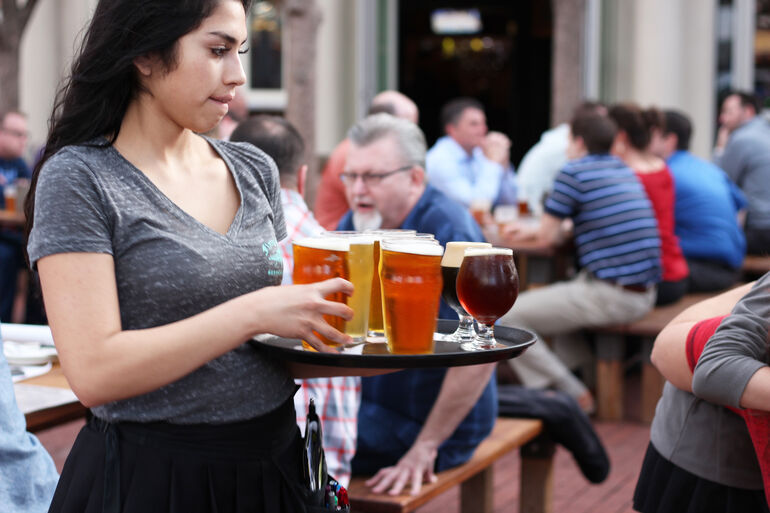Start 14-Day Trial Subscription
*No credit card required

2018 Restaurant Trends
Beer-Centric Restaurant Trends
According to the National Restaurant Association, the second- and third-most popular trends in the alcoholic beverages category are right in line with what was expected of trends in the restaurant industry at large.
While the general term of “artisanal/craft spirits” takes the top spot in terms of alcoholic beverage trends, a close second and third are onsite barrel-aged drinks and locally produced wine/spirits/beer.
This falls under the umbrella of hyper-local ingredients and fits in well with the direction that craft beer establishments are going. Brewpubs and craft beer restaurants that focus on ingredients and materials that they can source in-house gives them a leg-up on other places that might not have the same focus on creating intricate, authentic and hyper-local dishes.
In terms of big-picture, beer-focused restaurant trends, shared eating spaces are becoming a major focus of many establishments, making a “table for two” an antiquated concept. Many restaurants are interested in using longer table layouts that encourage communication between people who had not known each other before entering. This style also maximizes a restaurant’s square footage as well as the number of meals an establishment can serve. Beer fits in nicely with this template, as nothing gets people talking like a good brew.
Restaurants are also having to contend with the influx of interesting and experiential brewery taprooms, which showcase many of the same trends that are looking to pop in 2018. Brewery taprooms have the benefit of brewing beer on-site with locally sourced ingredients (even if most breweries are not hyper-local in their sourcing) as well as barrel-aging beers on-site, two of the main things that consumers are looking for in 2018.
Another wrinkle is that non-restaurant businesses are also getting into the immense popularity of craft beer, and you can find spas, salons, car washes and more serving craft beer to better cater to their diverse clientele.
Shared eating spaces are becoming a major focus of many establishments, as they encourage communication between people who had not known each other before entering. This style also maximizes a restaurant’s square footage as well as the number of meals an establishment can serve. Beer fits in nicely with this template, as nothing gets people talking like a good brew.
Similarly, local beer versus regional or national beer is still a major concern for beer-focused restaurants, as a record number of breweries in the U.S. (over 7,000) means more and more beers are available for fewer taps across the country. As hyper-local sourcing and a focus on more homegrown brands grow in popularity, regional and national favorites are becoming somewhat marginalized in an extremely saturated environment for consumers.
Pickup and delivery are two more areas where restaurants must modernize if they want to stay relevant. According to data from the National Restaurant Association, 67 percent of millennials say they would choose a restaurant that offered delivery over a restaurant that didn’t, and 57 percent said that online ordering would affect their decision to go to an establishment.
When it comes to beer, to-go options and growler fills are an area where taprooms and brewpubs might have the upper hand in this category, as people might be able to order online, come pick it up to go, and also take home a growler or crowler to enjoy with their meal.
Last, in a more general sense, a focus on customer engagement is becoming paramount and will continue in 2018. Goals such as upholding food quality standards, retaining high levels of customer service, and showcasing a pleasant atmosphere and ambiance are driving much of the long-term success of many restaurants.
To delve further into these issues, as well as the state of craft beer-focused restaurants in general, we spoke to Keith Schlabs, founder of Flying Saucer Draught Emporium – a storied franchise when it comes to pioneering local craft brews and finding novel ways to keep its patrons coming back for more.




